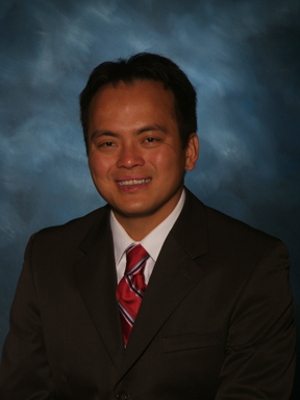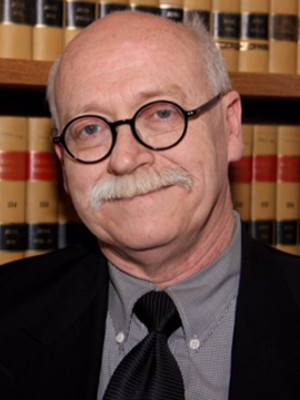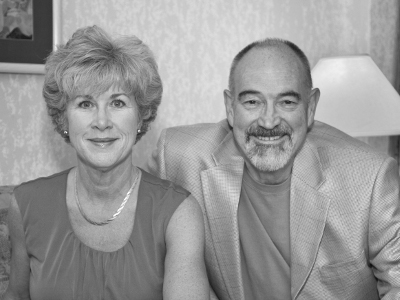 Judge Lung S. Hung, Circuit Judge, Malheur County Circuit Court
Judge Lung S. Hung, Circuit Judge, Malheur County Circuit Court
It was May of 2012. I had taken the bench in April of 2012. Prior to taking the bench, I had practiced exclusively as a prosecutor. I had some practical experience in civil litigation as a prosecutor, mostly in the context of juvenile dependencies and civil forfeitures, but there was no doubt my expertise was in criminal law. There I was, one month after taking the bench, presiding over a week-long medical malpractice trial.
Experiences like mine are not uncommon. In October of 2013, 18 months into my judicial career, there were 191 judges in the State of Oregon. 49 of those judges had not been on the bench for 3 years. That means there was a 25% chance if you, as a civil litigator, appeared before a judge in Oregon you would not be appearing before what I would consider a “seasoned” judge.1
As previously covered in Judge Tennyson’s September 2014 article, “Court Trials – A Jury of One,” it is important to know your judge. This is particularly true with a new judge. Learning as much as possible about any judge’s background is going to help you in your powers of persuasion. With a new judge, you may also be dealing with a person who is still figuring out his or her “style” on the bench. An opportunity to build a long, mutually respectful relationship with a judge and educate that judge in an area of the law in which you have expertise is before you. Here are my tips for how to accomplish this goal.
Know the Judge
History Find out what areas of the law the judge practiced prior to taking the bench. Good sources of information include the Governor’s announcement of the judge’s appointment, the judge’s insert into the voter’s pamphlet and the judge’s page on judgepedia.org. These sources will give you the basics. This information will let you know if you are appearing in an area of the law that is in the judge’s “wheelhouse” or an area where an opportunity for education exists.
Attorneys Talk to members of the local bar in which the judge presides. They can provide invaluable observations of how the judge handles his or her courtroom. If they have appeared before the judge on your specific issue, they can probably give you an opinion how best to present your arguments. In addition, OSB listservs are frequently used as a source to obtain practical information about judges.
Judicial Staff Ask the judicial staff what areas of the law the judge regularly presides over. Is the judge a jack of all trades or presides almost exclusively in one area of the law? Ask the staff if they have any hints on appearing before the judge. Chances are the staff member you are talking to has been through several judges and can advise you on subtle differences in style.
Introduce yourself I always appreciate when attorneys introduce themselves and tell me a little about them. Depending on the circumstances, this can be done prior to your hearing or right after the hearing has been concluded. Those who have taken the bench know that the job can be isolating. A handshake and an introduction go a long way in building a judge’s trust in your professionalism.
Convince the Judge
Court of Law A judge is sworn to uphold the law. A new judge might not be familiar with the area of the law you are asking him or her to uphold. If you have such a judge, it cannot be overstated how important a memorandum of law submitted prior to your hearing is. A memorandum of law allows you to set the stage. It clarifies what decisions have to be made. A memorandum of law is not the time to argue your case. Argue your case in your motion, your attached affidavits, in your trial memorandum to which the memorandum of law is a separate section of, and at your hearing. Keep the memorandum of law, as much as possible, to citations and quotes of relevant statutes and case law. If your memorandum of law is complete, concise and absent the chatter of arguments, a trial judge will have it open and sitting before him or her during the hearing and refer to it often while writing his or her opinion.
Court of Equity Judges want to do the right thing. We want to be fair. The right thing, first and foremost, is for the judge to do what the law requires. Chances are, though, if you are before a judge at a contested hearing, the law itself is not as black and white as to decide the issue. If a judge’s discretion is going to come into play, do not ignore the equity argument. Point out to the judge why this issue is important to your client. Point out to the judge why this issue is important to the class your client is in. If you have some legislative history showing why a particular statute was put into place or why it was amended, point it out. A judge that has never decided a particular issue cannot simply default to consistency, but will be deciding the right thing for the first time.
Decorum If you do not have any history with a new judge, this is not the time to relax your courtroom decorum. Even if other attorneys who may have appeared frequently before the judge are less formal in the hearing prior to yours, you have not developed that relationship yet. This will be the judge’s first impression of you, make it the best. Stand even if others sit. Keep your composure even if others do not. Treat all witnesses with respect even if you think they are lying through their teeth. A new judge may not understand that opposing counsel always takes an unreasonable position. A new judge may not understand that this area of the law is so well settled that you cannot believe you are even at this hearing. This is not your time to grind the axe. Make your presentation and arguments in a professional manner and build a relationship with the bench that will serve you well.
1 It is not a coincidence that at the time of this article, I have been a judge for approximately 3 years.
 Judge Karsten H. Rasmussen, Presiding Judge, Lane County Circuit Court
Judge Karsten H. Rasmussen, Presiding Judge, Lane County Circuit Court Judge Deanne L. Darling, Circuit Judge, Clackamas Juvenile Court
Judge Deanne L. Darling, Circuit Judge, Clackamas Juvenile Court Judge Edward J. Jones, Circuit Judge, Multnomah County Circuit Court
Judge Edward J. Jones, Circuit Judge, Multnomah County Circuit Court Judge Jamese L. Rhoades and Sr. Judge Don Dickey, Circuit Judges, Marion County Circuit Court
Judge Jamese L. Rhoades and Sr. Judge Don Dickey, Circuit Judges, Marion County Circuit Court